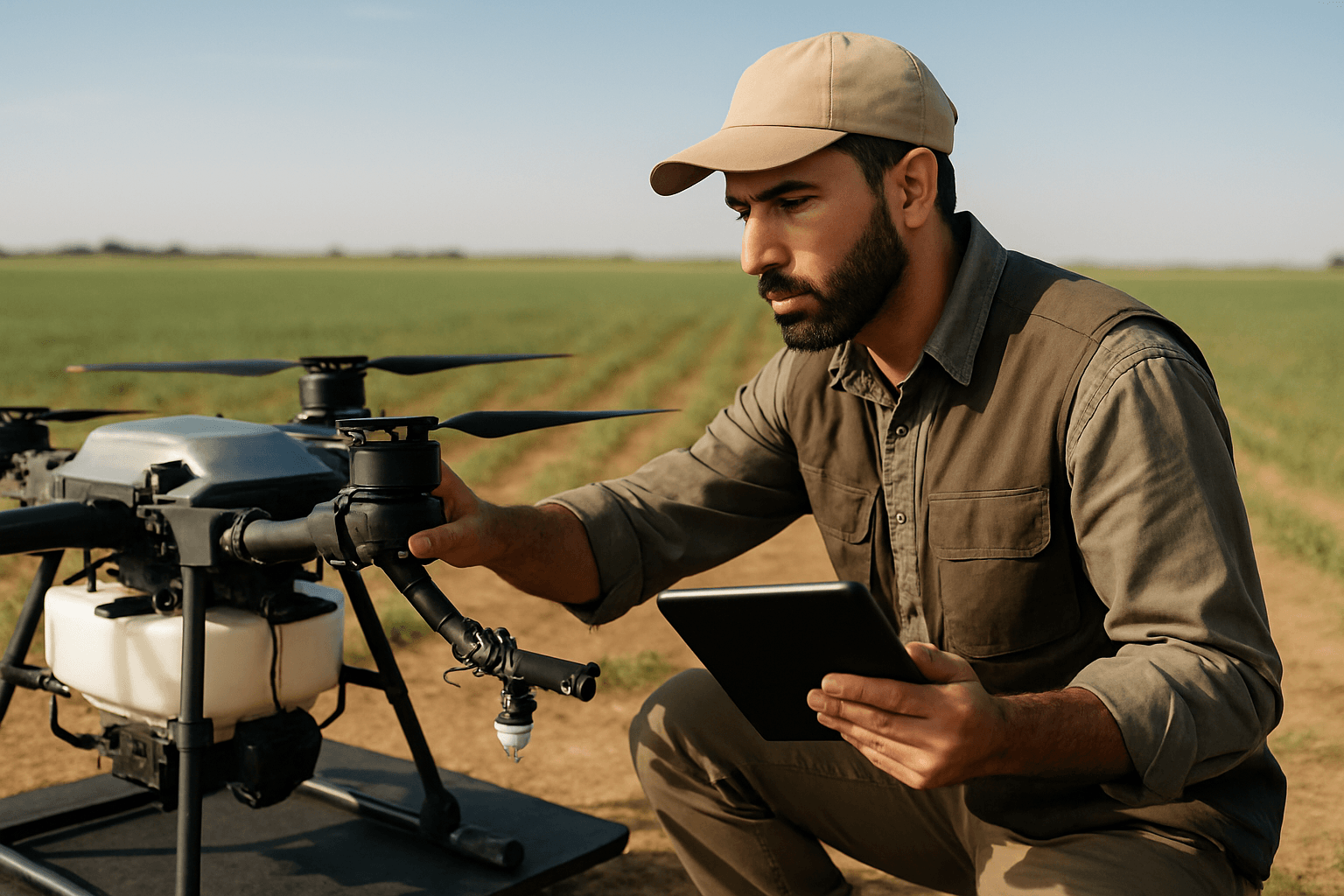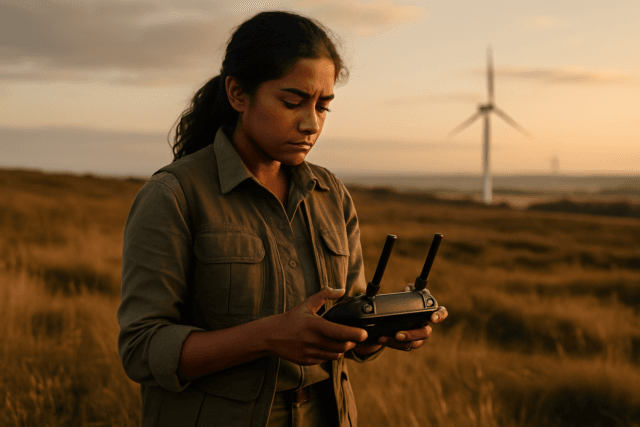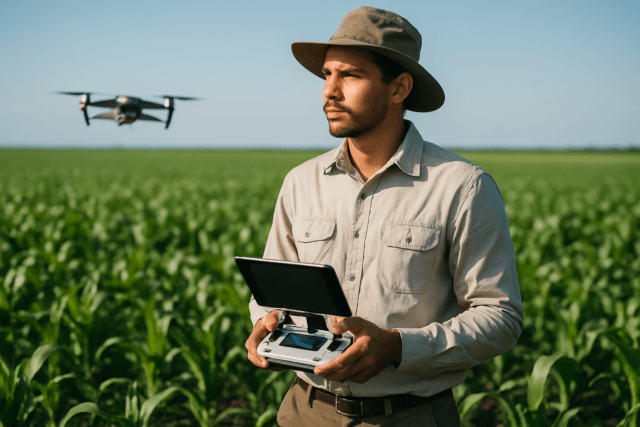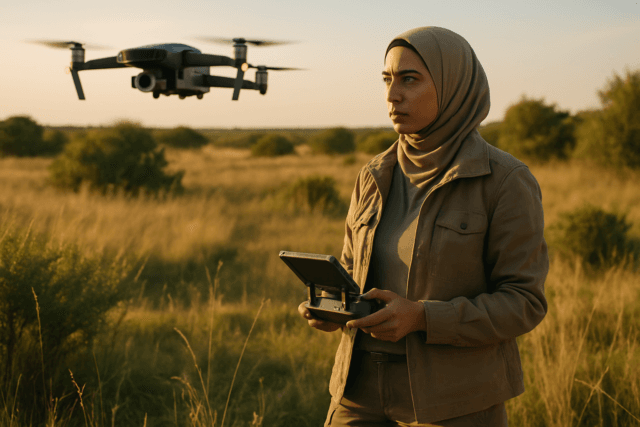The integration of drones into precision agriculture has revolutionized farming practices, offering unprecedented efficiency in crop monitoring, pesticide application, and land surveying. However, unlocking these benefits hinges on the diligent implementation of comprehensive safety protocols. Operating agricultural drones, particularly those involved in spraying chemicals, requires strict adherence to regulations, meticulous pre-flight planning, careful in-flight execution, and consistent post-flight maintenance to protect personnel, the environment, and the equipment itself.
Navigating Regulatory Compliance for Agricultural Drones
Before any agricultural drone takes flight, understanding and complying with relevant regulatory frameworks is paramount. These regulations are designed to ensure the safe operation of unmanned aircraft systems (UAS) and often vary by region.
Pilot Certification and Drone Registration
In the United States, commercial agricultural drone operators must obtain a Remote Pilot Certificate (Part 107 certification) from the Federal Aviation Administration (FAA). This involves passing an Aeronautical Knowledge Test covering topics such as airspace regulations, weather, and emergency procedures. Drones weighing 0.55 pounds or more must also be registered with the FAA, and a unique registration number must be visibly marked on the aircraft. This registration is typically valid for three years. For larger drones weighing 55 pounds or more, additional requirements and exemptions may apply, often necessitating an FAA Medical Certificate.
Specialized Agricultural Certifications (Part 137)
For drone operations involving agricultural applications like spraying and seeding, operators generally need an Agricultural Aircraft Operator Certificate under FAA Part 137. This certification requires submitting an application to the FAA that details the drone’s intended use, the substances to be applied, and the operational area. Operators must also demonstrate compliance with stringent safety protocols for handling and storing materials and preventing environmental contamination.
State, Local, and Environmental Regulations
Beyond federal aviation rules, agricultural drone operators must also navigate state and local regulations, which may include additional permitting or notification requirements. When applying pesticides, compliance with Environmental Protection Agency (EPA) approved pesticide labels and established application guidelines is crucial. Some states also require specific certifications or licenses for applying pesticides, depending on the chemical type and operation scale.
Remote ID Compliance
To enhance airspace awareness and security, drones must be equipped with approved Remote ID technology. This technology broadcasts crucial information, including the drone’s location, altitude, and its operator’s control station location, enabling real-time identification and tracking by regulatory authorities and other airspace users.
Comprehensive Pre-Flight Planning and Risk Assessment
Thorough pre-flight planning is a critical step in mitigating risks and ensuring safe agricultural drone operations.
Site Inspection and Environmental Assessment
Before any flight, a detailed site inspection is essential. This includes identifying and clearing obstacles around takeoff and landing zones and confirming safe access to these areas. It’s crucial to assess the working environment for potential hazards such as power lines, trees, buildings, and densely populated areas, maintaining safe distances from infrastructure like power plants, substations, and high-speed railways. Operators should also confirm with farmers about breeding conditions within a 3-kilometer radius to evaluate potential drift of liquid medicine.
Weather conditions play a significant role in flight safety. Operators must review weather forecasts, checking wind speed and direction, temperature, and humidity. Operations should be avoided in harsh climates like heavy rain, thunderstorms, snow, sand, strong winds (above level 4), or dust.
Risk Management Plan Development
A structured approach to identifying, assessing, mitigating, and documenting safety hazards is vital. This involves using a risk matrix to evaluate the severity and probability of potential incidents. For agricultural spraying, specifically, this includes assessing risks related to chemical safety, drone malfunctions, and potential crashes. Developing a detailed risk management plan, often based on methodologies like SORA (Specific Operations Risk Assessment), helps identify operational limitations and technical requirements to eliminate or reduce risks.
Developing a Detailed Flight Plan
A flight plan should be developed considering mission objectives, designated spray areas, no-fly zones, and local regulations. It should include details on altitude limits (typically not exceeding 400 feet unless an exemption is obtained), flight paths, and contingency procedures for emergencies. Deploying geofencing and obstacle avoidance features on the drone is recommended.
Essential Pre-Flight Checks for Drone Integrity
Before each takeoff, a systematic inspection of the drone and its components is crucial for identifying any issues that could compromise safety or performance.
Drone Hardware Inspection
- Frame and Arms: Check for visible damage, cracks, bends, or loose parts. Ensure all folding arms lock into place tightly.
- Propellers and Motors: Inspect propellers for cracks, chips, wear, or imbalance. Replace damaged propellers promptly. Check motor bases for looseness and listen for unusual sounds. Wiggle propellers to check for play, which could indicate a loose clamp or motor bearing issue.
- Landing Gear: Check for visible damage and ensure all screws are secure.
- Spraying System (for spray drones): Verify that the spray system is free from blockages or leaks. Inspect nozzles and ensure the spray rod/lance is tightly connected.
- Sensors and Camera: Clean camera lenses, radar, lidar, sonar, thermal, and multispectral sensors to ensure accurate data collection and obstacle avoidance. Calibrate sensors and the compass if recommended by the manufacturer.
Battery Management
- Charge Levels: Ensure all drone batteries and the remote controller battery are fully charged before operation. It’s advisable to operate with more than one LED on the remote controller’s battery indicator.
- Battery Health: Inspect batteries for any signs of damage, swelling, or corrosion on contacts. Do not charge hot batteries immediately after a flight; allow them to cool down. Store batteries in a cool, dry place, typically at 50-60% charge when not in use.
Software and Connectivity Checks
- Firmware Updates: Verify that the drone’s firmware and software are current.
- GPS/RTK Signal: Confirm a strong GPS signal and, if applicable, RTK status and strength. Ensure the drone is receiving signals from at least 15 satellites.
- Controller Link: Ensure the remote controller is correctly linked to the drone.
- Video Feed: Verify that the First Person View (FPV) video is functioning.
- Settings: Confirm all operational settings (e.g., spray complete function, lost link protocols, radar settings) are correctly configured for the mission.
Personnel Preparedness
- Personal Protective Equipment (PPE): Ensure all operators wear appropriate PPE, especially when handling and mixing chemicals (e.g., gloves, goggles, masks, respirators).
- Pilot Condition: The operator should be in a sober state, well-rested, and not under the influence of drugs or alcohol.
- Briefing: Conduct a pre-flight safety briefing for all personnel involved in the operation.
Safe In-Flight Operations
Maintaining safety during flight requires continuous vigilance and adherence to established protocols.
Takeoff and Landing Procedures
- Clear Area: Select a flat, open, and clear ground area for takeoff and landing, free of people, animals, or significant obstacles within a 10-meter radius. Roads with traffic are strictly prohibited for takeoff and landing.
- Safe Distance: Ground crew and bystanders must maintain a sufficient safety distance from the drone during takeoff and landing, typically more than 6 meters from the rear of the aircraft.
- Gentle Controls: When manually taking off or landing, operate controls gently and smoothly, avoiding abrupt inputs.
- Hover Check: For initial flights or after extended inactivity, perform a hover test at about 2.5 meters to check stability and control responsiveness. Land immediately if abnormal shaking or unresponsive controls are observed.
Maintaining Control and Awareness
- Visual Line of Sight (VLOS): Maintain visual line of sight with the drone at all times during flight.
- Obstacle Avoidance: Continuously monitor the drone’s flight path for obstacles. Modern agricultural drones often include collision avoidance radar, which can be triggered, potentially causing the drone to slow or stop.
- Flight Data Monitoring: Pay close attention to operation data and the drone’s flight status, ready to implement emergency controls if needed.
- Emergency Procedures: Have clear, established emergency protocols, such as immediate landing if adverse weather or unforeseen obstacles are detected, or following manufacturer guidelines in case of drone failure. If a drone lands on a power line, contact the electrical service department; do not attempt to retrieve it yourself.
Chemical Application Safety
- Drift Management: Do not operate in strong winds (above level 4) to avoid chemical liquid drift. Ensure the wind direction deviates from people, animals, and drinking water sources.
- Safe Distance from Personnel: Always keep a safe distance (more than 6 meters) from people and do not fly directly over them. If someone approaches, take evasive action.
- Pesticide Handling: Prevent splashing when mixing chemicals. It’s recommended to use the secondary dilution method in open spaces and filter the medicine before adding it to the spray tank. If medicine splashes into eyes, rinse immediately with plenty of water and seek medical attention if necessary.
Post-Flight Procedures and Ongoing Maintenance
Proper post-flight procedures and continuous maintenance are crucial for the longevity of the drone and continued safe operations.
Immediate Post-Flight Actions
- Cleaning: After each flight, thoroughly clean the drone’s exterior, especially the camera lens and any parts exposed to chemicals. Use a soft, damp cloth and avoid strong cleaners unless specified by the manufacturer. Flush the spray tank and lines with clean water, and consider using a neutralizing solution for chemical spray systems at the end of the day.
- Battery Care: Allow batteries to cool down before charging. Store them properly in a cool, dry place, typically at a partial charge (50-60%) if not used immediately.
- Inspection: Conduct a post-flight inspection of the drone for any physical damage, loose parts, or signs of wear and tear, paying attention to propellers, motors, and the frame.
Regular Maintenance Schedule
- Motor Cleaning: Regularly clean motors to prevent accumulation of dust, sand, grass, or dirt that can lead to overheating or reduced efficiency. Use a soft brush and isopropyl alcohol for thorough cleaning.
- Sensor Calibration: Periodically calibrate all sensors (barometer, lidar, radar, sonar, thermal, multispectral) to ensure accurate readings.
- Firmware Updates: Continuously monitor for and install firmware and software updates from the manufacturer.
- Component Checks: Regularly inspect and lubricate moving parts, check for corrosion, and assess overall performance using data logs.
- Professional Servicing: Consider professional checkups and servicing every 12 months or more frequently for heavily used drones to prolong their lifespan.
Documentation and Review
- Flight Logs: Maintain detailed logs of all flights, including operational metrics, weather conditions, chemical usage (if applicable), and any incidents.
- Maintenance Records: Keep thorough records of all maintenance performed, including inspections, repairs, and part replacements.
- Incident Reporting: Implement a clear mechanism for reporting incidents and near-misses, followed by a review process to extract lessons learned and implement improvements.
- Policy Review: Periodically review and update operational procedures based on changes in equipment, regulations, and lessons learned from flight data and incident reports.
Training and Education
Effective safety protocols are only as good as the personnel implementing them. Comprehensive training is essential.
Pilot Training
Beyond regulatory certification, specialized training in agricultural drone operations is highly recommended. This includes hands-on flight training, mission planning, autopilot usage, optimizing material delivery, battery management, and understanding the drone’s flight envelope. Training should also cover specific safety protocols related to chemical handling and application, ensuring competence in handling and applying chemicals safely and in compliance with environmental regulations.
Continuous Learning
Drone technology and regulations are constantly evolving. Operators should stay informed through official aviation authority websites, industry newsletters, professional associations, and regular training refreshers and workshops. Building a network of certified drone pilots and experts can also provide valuable insights and support.
By integrating these comprehensive safety protocols into every aspect of agricultural drone operations, from planning and piloting to maintenance and training, farmers can harness the transformative power of this technology responsibly and effectively, ensuring both productivity and safety.





